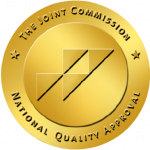Did you know that different drugs are abused at different rates in different cities? At the Boardwalk Recovery Center in San Diego, we see firsthand the specific types of drugs abused in our city. Throughout the past decade, there has been a rise in drug abuse in San Diego and an increasing need for quality addiction treatment. In 2015 alone, over 20,000 people in San Diego County were admitted to an adult drug treatment center of some sort. According to the California Health Care Foundation (CHCF) reports, around 8% of California residents struggle with addiction.
San Diego Drug Abuse Statistics
The major drugs of concern in San Diego County and Southern California are heroin and methamphetamine (meth). Both heroin and meth are commonly abused in Southern California because of their accessibility and the way they are obtained. These two illegal drugs are trafficked up across the southwest border between California and Mexico, which is in close proximity to Boardwalk’s Pacific Beach location. The Drug Enforcement Administration (DEA) has published data that shows that up to 90% of meth used in the United States comes from Mexico. The local San Diego DEA Office says that methamphetamine is one of the biggest drug threats in Southern California. It is equally important to remember that heroin is also supplied out of Mexico into Southern California, leading to the same concerns.
Mexican meth and heroin are potent, low cost, and pure, making them very popular in San Diego. This combination makes these drugs a significant threat to users. Synthetic opioids and Fentanyl are other emerging drug threats in the San Diego area. Unfortunately, these drugs may also appear in heroin, meth, and cocaine supplies, increasing the danger of drug use and chances of overdose due to the enhanced level of potency. Other prevalent drugs abused in San Diego include marijuana, cocaine, and prescription drugs.
In 2015 alone, heroin and meth abuse were responsible for around a third of all treatment admissions in San Diego. The purity of meth and heroin is also rising in Pacific Beach and in the San Diego region today. Another leading reason for admissions at treatment centers in San Diego is alcoholism. In fact, alcohol abuse was the reason for 20% of treatment admissions. Marijuana abuse was the third highest cause with 15% of admissions, and prescription drugs accounted for 5% of treatment admissions. Lastly, cocaine abuse represented less than 5% of all treatment admissions in San Diego in 2015 but continues to rise. Unfortunately, The San Diego Union-Tribune recently published data that reveals that overdose deaths related to all of these drugs are rising.
The Rise of Fentanyl
One particularly prominent threat to the region is fentanyl-involved overdose deaths in San Diego County. Deaths due to this drug continue to rise in San Diego. In 2017, a record number of 273 individuals passed away from an overdose involving fentanyl. The death rate is rising, as this was an 8% increase from the previous year. Fentanyl is more potent than heroin and deadlier in smaller amounts, making it one of the most fatal synthetic opioids. Fentanyl is often used to cut heroin, meth, and cocaine, making it virtually undetectable to drug users.
The San Diego Meth Problem
Meth is also a continual issue in Southern California. A 2017 survey found that 55-58% of arrested drug users tested positive for meth. Almost all of those users indicated that they were able to obtain the drugs locally in San Diego.
According to The San Diego Union-Tribune reporting, the deaths due to meth abuse reached record numbers in 2016, when 377 meth users died due to overdose. The County News Center has published data showing that there is a death related to meth every 23 hours in San Diego County. The dangers of meth abuse are clearly rising in San Diego. It doesn’t help that the price of meth is also dropping while increasing in purity; this deadly combination increases the risk for fatal overdose. According to research done by the National Institute of Medicine, National Center for Biotechnology Information decreases in methamphetamine purity-adjusted price along with the bimodality of crystal methamphetamine purity may account for some of the recent increase in methamphetamine-related harm. For a given amount spent, methamphetamine purchase power has increased and the presence of extreme purity variations may challenge individuals’ control of consumption.
Evidence of this trend is also supported in the National Institute on Drug Abuse (NIDA) Archives. In 2014, Karla D. Wagner, Ph.D., an Assistant Professor at the University of California, San Diego, studied drug abuse patterns and trends in San Diego County. The two key findings from this study on drug use for the reported period were increasing indicators, presence or absence of specified drugs or their metabolites, for methamphetamine and continued gradual increases in all heroin indicators, accompanied by a growing local concern about overdose deaths involving heroin/morphine and transitions by users from prescription opioids to heroin. At the beginning of 2013, most indicators for methamphetamine displayed signs of increasing, after many years of mixed or declining.
Having these statistics allows us to better understand what illegal addictive substances are prevalent in our local area. At Boardwalk Recovery Center, we have the expertise and awareness of what drug abuse is going on in our community and are here to tailor our treatment to the individual client, helping minimize these statistics.
Life can be good again and we’d like to show you how.






